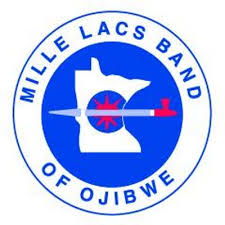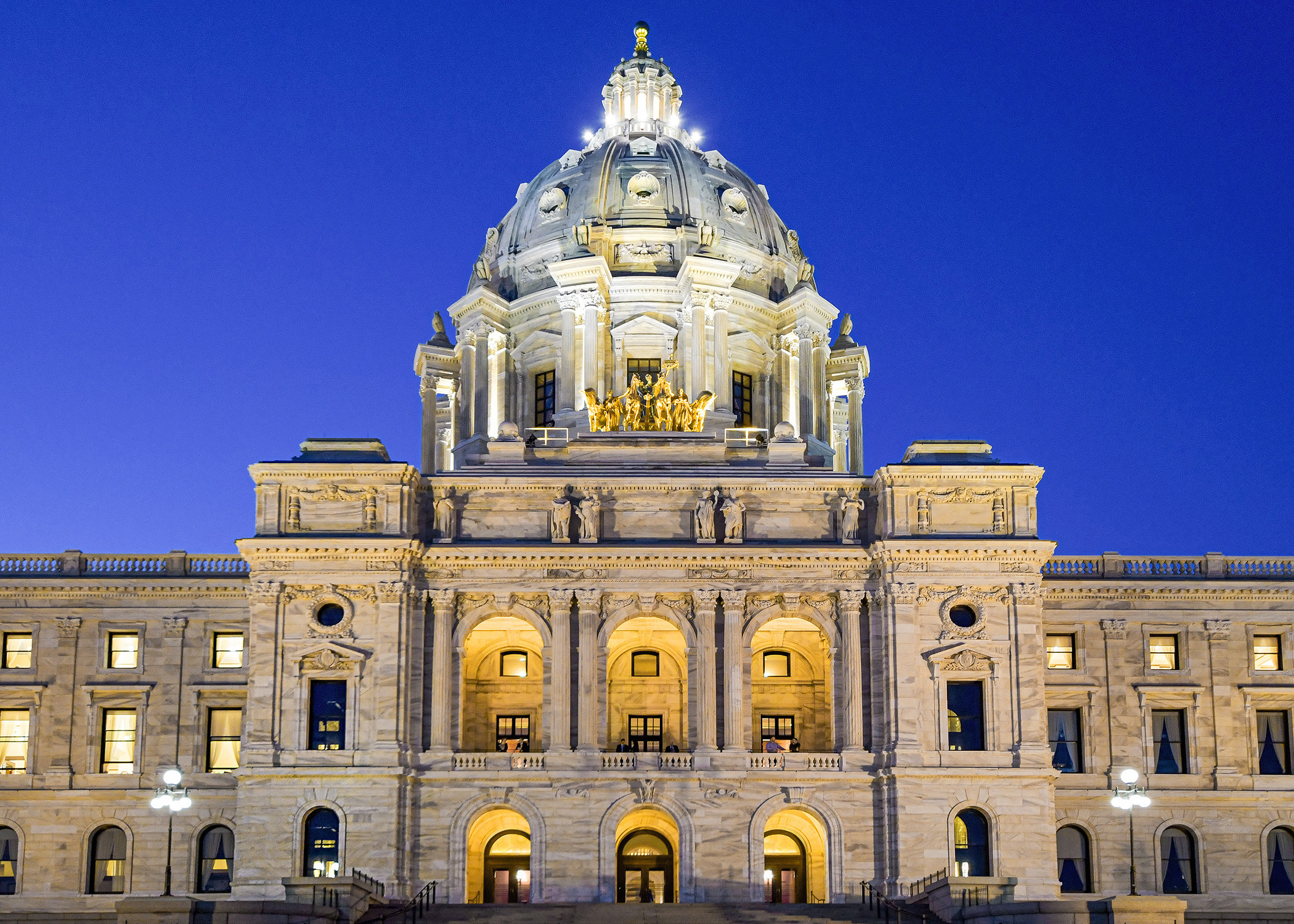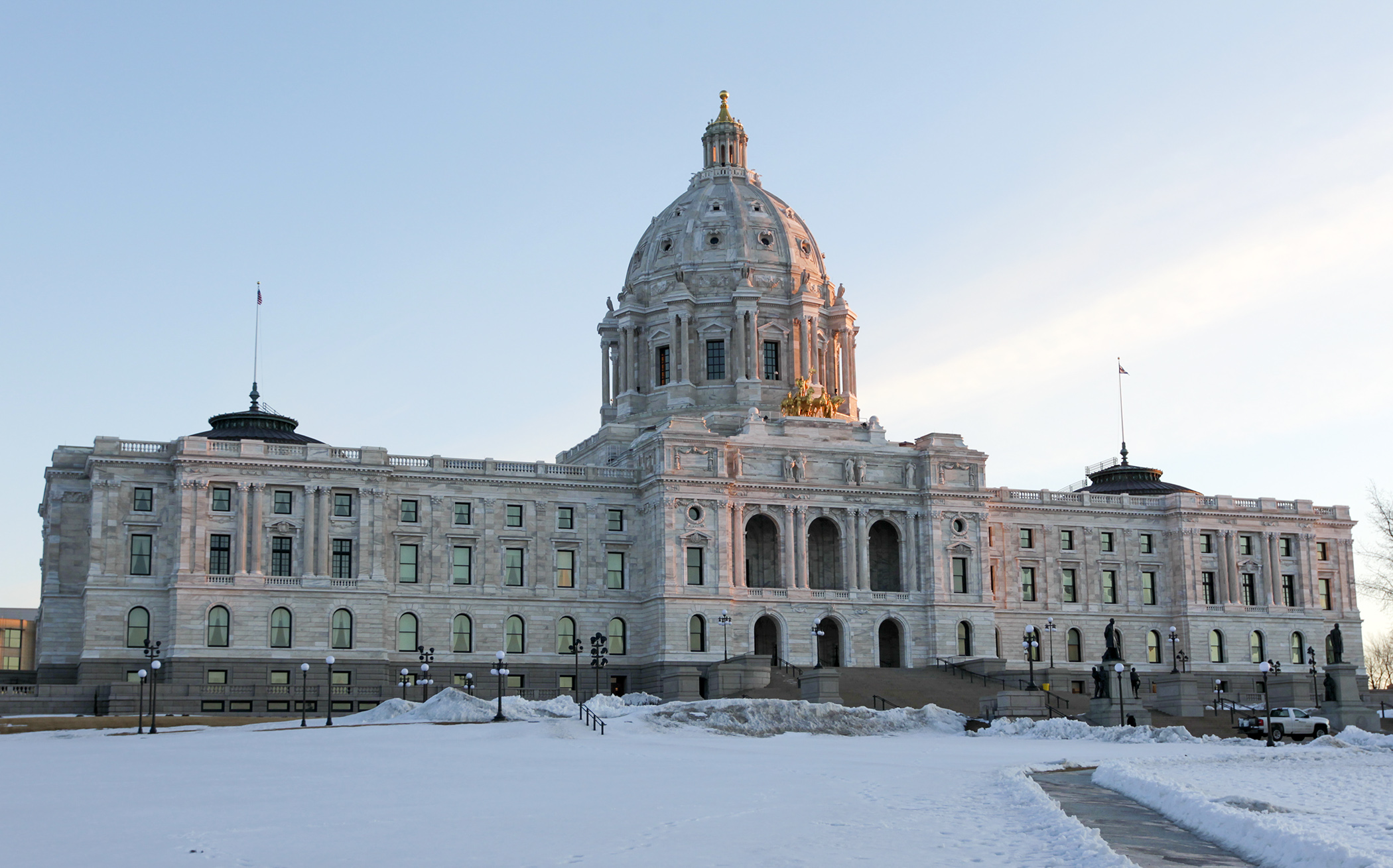Tackling achievement gap for American Indian students

Before the first class bell rings on Monday mornings, students at Nay Ah Shing High School gather to participate in a tradition that was instituted long before they were born.
“Pipe and Dish” sets the tone for students and staff at the Mille Lacs Band of Ojibwe-run school in Onamia. The ceremony allows participants to “offer” tobacco and food to the Creator to ask for help in their studies and work in the days ahead.
The morning ritual serves as a symbolic opportunity for students and staff to recognize the cultural roots the school was founded on 40 years ago. But Nay Ah Shing’s emphasis on its American Indian culture is not limited to the “Pipe and Dish” offering, according to Suzanne Wise, education commissioner for the Mille Lacs Band.
“People will learn better in their own environment,” Wise told the House Education Finance Committee at a Feb. 25 hearing on American Indian education. “When we are surrounded by people we feel comfortable with or who we feel empowered by, we feel good, we are going to become engaged in our surroundings. And it’s the same with our native children in our schools.”
As one of four tribal contract schools in Minnesota, Nay Ah Shing’s mission – developed by community members – is to infuse Ojibwe language, traditions and culture into its learning curriculum. The goal being to educate the youngest generation of American Indians with skills to live in two communities: the reservation and the community abroad.
“Not all of our teachers are native, which means a lot of training goes into helping our staff be sensitive to the students,” Wise said.
In addition to the standard graduation requirements that all high school students are subject to, students at Nay Ah Shing receive an hour each day of instruction in Ojibwe language and culture. The school employs staff who work to integrate native cultural elements into each subject taught — as is required by state law — and premised on ensuring American Indian students in Minnesota retain their cultural roots while attaining access to the same quality education resources that all children are constitutionally guaranteed.
Representatives of tribal communities told the education committee that in order to keep that promise, the state needs to make additional investments in the approximately 20,000 students of American Indian heritage that attend schools across the state, many of whom who struggle to keep up a pace of learning that will allow them to graduate on time.
MORE: LISTEN TO THE MEETING
Graduation rates concerning
Dennis Olson, director of the Minnesota Office of Indian Education since 2012, is the former commissioner of education for the Mille Lacs Band of Ojibwe.
He was dismayed to learn just months into his new position that Minnesota ranked last in on-time graduation rate (42 percent in 2011) for its American Indian students.
Those numbers have risen 8 points, but the 50.6 percent of American Indian students who graduated on time in 2014 still trail the state average among all students (81 percent) by more than 30 percent.
“It’s a completely sobering stat to see,” Olson told the committee. “I feel as though it is a very big black eye in terms of how we educate our students and serve our tribal communities.”
Leaders from the state’s 11 tribal communities have asked legislators for a number of policy reforms and additional funding to help all American Indian students —about 95 percent of whom attend public and charter schools — realize their potential and close the achievement gap they say exists between them and their peers.
Specifically, the American Indian Education Working Group, commissioned last year by Gov. Mark Dayton, has asked for increased funding for the Success for the Future grant program that would bring additional education dollars to public schools that enroll American Indian students. The group also has asked that the program transition from a competitive grant-based to a formula-driven funding scheme to support additional funding for schools and it wants the state to lift the $1,500 cap on per pupil funding.
Other recommendations:
- amending the “Indian Education Act of 1988” to strengthen the roles and responsibilities of Indian Education Parent Advisory Committees and strongly emphasize school district accountability in meeting the needs of American Indian students through the World’s Best Workforce legislation;
- providing $1.6 million in additional funds for Early Childhood Community Education programs targeted specifically to tribal communities; and
- creating a provision which allows Minnesota to recognize additional alternative high school equivalency test options in addition to the GED.
Proposals: How to get there?
While the working group recommendation to transition Success for the Future into a formula-based program shares some overlap with the governor’s education proposal and a recently passed Senate education appropriations bill, the House omnibus education finance bill includes an additional $1.4 million over the next two years for the program, but it would continue to be run on a competitive grant basis. Under provisions included in HF844, tribal contract schools would continue to be funded at current levels.
The Senate omnibus education finance bill includes $6.7 million that all public, charter and tribal contract schools with more than 20 American Indian students would be eligible to receive based on a per pupil funding formula. The bill also includes $2.6 million in additional aid for tribal contract schools. The funding and formula differences between the House and Senate are expected to be worked out in a conference committee.
The House bill contains a number of policy reforms that reflect concerns American Indian education leaders have highlighted, including that public schools with a notable concentration of American Indian students should create more opportunities for parents of those students to be involved in ensuring their culture is incorporated into their child’s education. It would also require such schools to work with parents of American Indian students in recruitment and selection of applicants for teaching positions in American Indian language and culture.
Such initiatives reflect the growing number of American Indian students who are enrolling public schools, said Rep. Sondra Erickson (R-Princeton), who chairs the House Education Innovation Policy Committee.
“There are probably more American Indian children in our Princeton (school district) than ever,” said Erickson, who taught in Princeton schools for more than 30 years and whose legislative district includes a significant portion of the Mille Lacs Band Reservation. “These families aren’t all choosing to live on a reservation or a trust land, they are living all over … probably because of job opportunities that allow them to commute to the Twin Cities more easily.”
Erickson believes the educational disparities that exist between American Indian students and their peers can’t entirely be explained by the lack of consistent federal funding because such a small percentage of American Indian students attend any of the four tribal contract schools in Minnesota.
“We want to ensure that all of our American Indian students have the same opportunities,” Erickson said. “What we have in our bill aims to meet the needs that have been highlighted, but it really is a Band-Aid. It’s going to be helpful, but it is not the long-term answer.”
Joan LaVoy, director of education for the White Earth Nation, believes that answer lies in more early education support for American Indian students.
“When you talk to our kindergarten teachers, they know which students coming in either participated in a Head Start program or a four-star rated early childhood program,” said LaVoy. She added that White Earth tribal school programs and agencies are not able to provide early learning services to all children who need them.
BIE funding unreliable, leaders say
For the more than 800 children that attended tribal contract schools in Minnesota primarily funded by the federal Bureau of Indian Education, increased state investment in early education is a good start, but a more stable funding source is needed, said Rocky Papasodora, chairman of the Bug-O-Nay-Ge-Shig School on the Leech Lake Reservation.
MORE: View a map of the state's tribal contract schools
“Students and their families who choose to attend the Bug School are assured they will learn the Ojibwe tradition, culture, history and the language,” Papasodora said. “But with state equalization funding capped at $1,500, a significant disparity exists for these children and those who attend public schools.”
Erickson shares in the dismay that tribal contract schools are experiencing with the lack of federal support.
“The federal government should be taking responsibility for that; but they haven’t and I don’t think they will,” Erickson said, adding that public and charter schools have become a more viable option for American Indian students in recent years.
Increased emphasis on native culture in public schools
Because the vast majority of American Indian students attend public and charter schools, the Success for the Future program that brings additional support to American Indian students enrolled in public and charter schools allows for more visibility of native culture to all students, said Olson. He added that the Department of Education and Office of Indian Education have been working in recent years to integrate the history of Minnesota’s Native Peoples into required social studies curricula that can benefit all students.
“Those new standards provide great opportunities — for the first time — for students to have in-depth conservations in the classroom about American Indian communities in Minnesota,” Olson said. “And we are teaching students not only from a historical perspective, but all the way through current times and contemporary issues.”
Rep. Carlos Mariani (DFL-St. Paul) said “building relationships with students based on who they are” is key to helping American Indian students and other cultural demographic groups impacted by the achievement gap.
“Young people who feel good about who they are tend to be students who achieve well,” he said.
Related Articles
Search Session Daily
Advanced Search OptionsPriority Dailies
House closes 2024 session in chaotic fashion, trading bonding for budget boosts
By Rob Hubbard It was a session of modest ambitions.
After 2023 produced a record $72 billion in biennial funding, Minnesota’s legislative leaders were dampening expectations for anything ...
It was a session of modest ambitions.
After 2023 produced a record $72 billion in biennial funding, Minnesota’s legislative leaders were dampening expectations for anything ...
Ways and Means Committee OKs proposed $512 million supplemental budget on party-line vote
By Mike Cook Meeting more needs or fiscal irresponsibility is one way to sum up the differences among the two parties on a supplemental spending package a year after a $72 billion state budg...
Meeting more needs or fiscal irresponsibility is one way to sum up the differences among the two parties on a supplemental spending package a year after a $72 billion state budg...